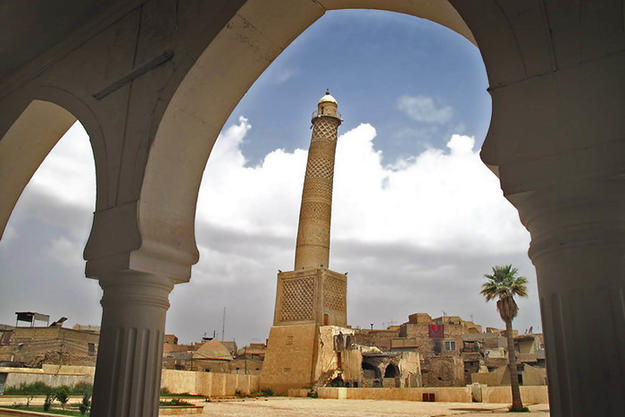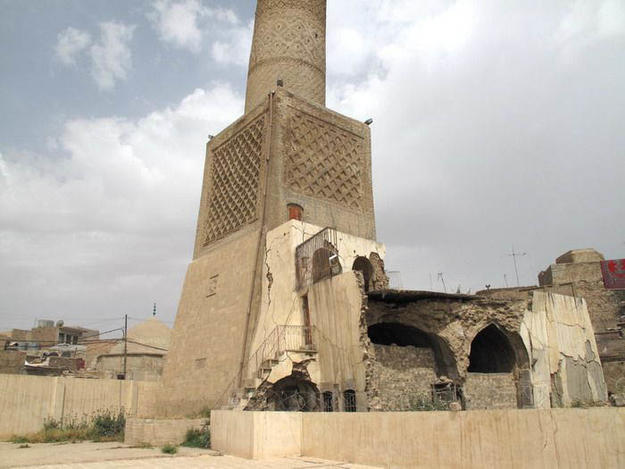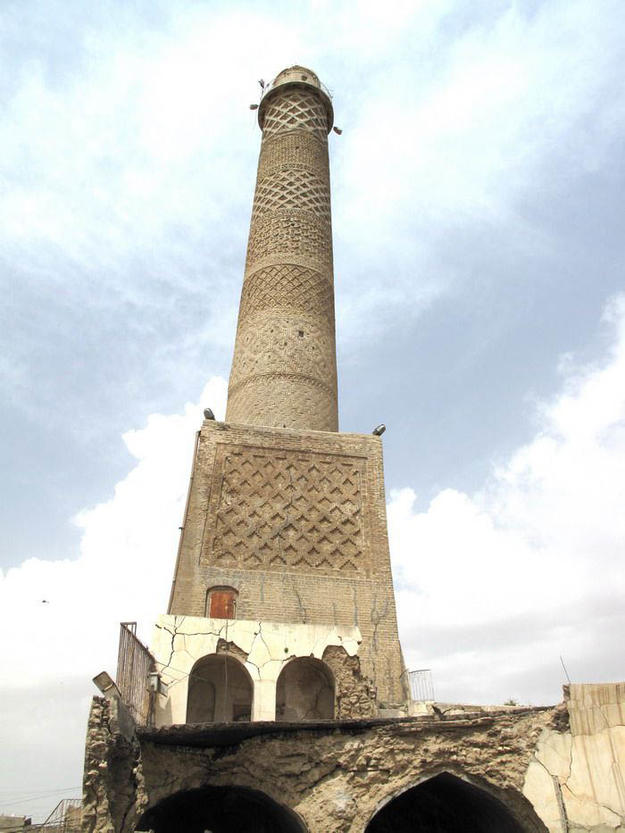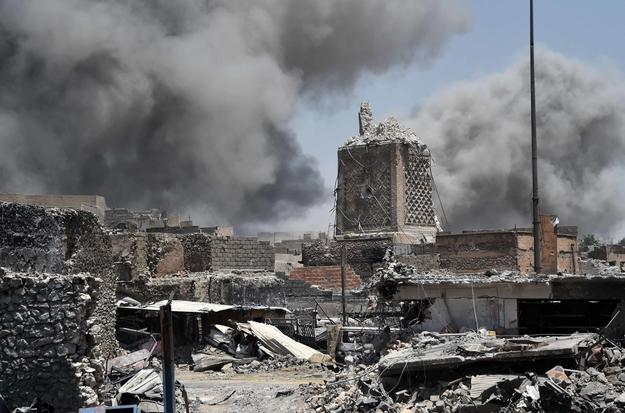2010 and 2018 World Monuments Watch
Known by locals as al-Hadba’, or the hunchback, because of its pronounced tilt, the minaret of the Great Mosque of al-Nuri was a prominent landmark of the old city of Mosul. Built under the Seljuk ruler Nur al-Din, it was part of a religious complex that included a mosque and a madrassa and was named after its patron. The minaret, built in 1172, was 45 meters tall, decorated with ornamental brickwork along its cylindrical shaft and square base. Five times a day a muezzin would ascend the spiral stairway and sing the call to prayer from the balcony. By the time the famous Moroccan traveler Ibn Battuta visited the city in the fourteenth century, the minaret was already listing noticeably and had been given its nickname, which remained ever since. In the 1940s, as part of a renovation campaign sponsored by the Iraqi Department of Antiquities, the mosque and the madrassa were dismantled and rebuilt according to a new plan. But the minaret remained as one of the few original elements of the medieval complex, a landmark of Mosul, towering over the low cityscape. So iconic was the minaret that since 2003 its figure has adorned the Iraqi 10,000-dinar banknote.
This changed in 2014, with the escalation of civil conflict in Iraq. In July of that year, the Islamic State seized Mosul by force and chose the mosque of al-Nuri to proclaim the establishment of a worldwide caliphate. Those residents of Mosul who did not flee toiled under a harrowing occupation for three years, liberated only after a brutal nine-month battle in 2016-2017. The fight for Mosul reduced much of the city to ruins and displaced more than 700,000 civilians, most now living in temporary camps. The al-Hadba’ minaret was another victim of the battle: on June 21, 2017, as Iraqi forces approached, Islamic State militants set and detonated explosives to destroy the minaret and the mosque.
Many other mosques and shrines were deliberately destroyed in Mosul and throughout Iraq over the course of the conflict. As the long process of post-conflict reconstruction and social healing begins, the 2018 World Monuments Watch calls attention to the special role that religion and culture have to play. Calls for the reconstruction of the al-Hadba’ Minaret were launched immediately after its destruction, in order to serve as an emblem of overcoming and continuity. The 2018 Watch calls for important principles to be adhered to in this process: establishing a shared vision among all stakeholders, integrating the rebuilding of the mosque and the minaret into the process of social recovery for a traumatized community, and ensuring active local participation.
The minaret was first included on the World Monuments Watch in 2010, in the context of ongoing conflict, to highlight a conservation priority and focus technical assistance on the site. In 2012, UNESCO and the Governorate of Nineveh agreed to collaborate on a project to study and conserve the al-Hadba’ Minaret. The launch of a project that would have resulted in the stabilization of the minaret was announced in 2014, only days before Mosul was captured by the Islamic State.
Since the Watch
In April 2018, it was announced that UNESCO, United Arab Emirates, and Iraq had agreed on a $50 million partnership to conserve and reconstruct the Great Mosque of al-Nuri and its iconic leaning minaret in the Old City of Mosul, Iraq. The project concerns the restoration and reconstruction of the historic landmarks of Mosul. Reconstruction of the mosque is scheduled to begin in early 2020.




